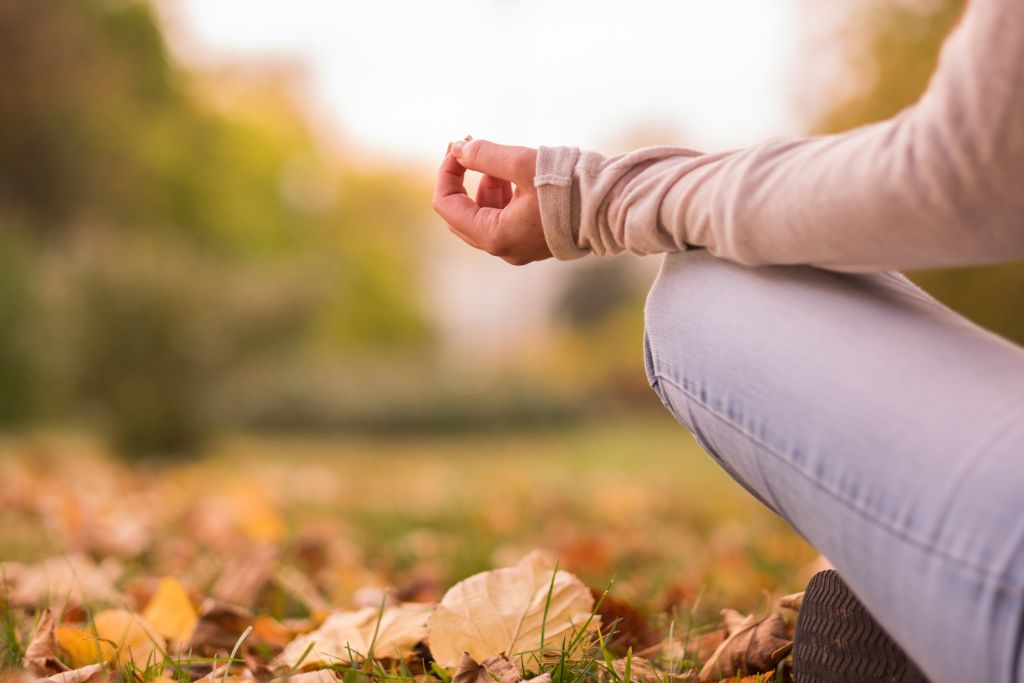
He who lives in harmony with himself, lives in harmony with the world.” ~ Marcus Aurelius
MEDITATION AT HOME
Whether you’re looking to reduce stress or nourish your spirit, find stillness or flow through movement, there’s a meditation practice for you. Don’t be afraid to step out of your comfort zone and try different forms. It often takes a little trial and error until you find the one that fits.
Meditation can help:
- Lower blood pressure
- Reduce anxiety/stress
- Decrease pain
- Ease symptoms of depression
- Improve sleep
- Improve mood
Step One: Get into a comfortable position and relax. Many people think they need to sit with their legs crossed a certain way, but really, whatever position you feel is comfortable is the position you should try. Some people avoid lying down because they fall asleep if they’re tired; you can experiment and decide what’s right for you. Once you’ve found your position, close your eyes, relax your muscles, and breathe from your diaphragm. Let your shoulders, your belly, and the muscles in your face relax. Breathe in deeply through your nose, gently expanding your belly rather than your chest, then exhale through your mouth.
Step 2: Choose your Type:
Mantra Meditation
This type of meditation uses a repetitive sound to clear the mind. It can be a word, phrase, or sound, such as the popular “Om.” It doesn’t matter if your mantra is spoken loudly or quietly. After speaking the mantra for some time, you will find that you are more alert and in tune with your body and environment. This allows you to experience deeper levels of awareness. Some people enjoy mantra meditation because they find it easier to focus on a word than on their breath. This is also a good practice for people who don’t like silence and enjoy repetition.
Music Meditation
This means finding music that you enjoy listening to. Look for music with a slower tempo, and preferably without lyrics, which can be distracting and can engage your conscious mind—the part of your mind that we hope to slow down and dial back. Stay focused on the music. If you find yourself thinking about other things, gently redirect your attention to the present moment, the sound of the music, and the feelings in your body that the music evokes.
Sound Meditation
While there are various types of sound meditation, one that is becoming more popular is the “sound bath,” which uses Tibetan singing bowls, quartz bowls, and bells to guide the listener. This type of practice highlights how the experience of sound manifests not only through hearing but through tactile physical vibrations and frequencies. Many people find it incredibly powerful.
Guided Meditation or Guided Imagery.
This type of practice helps you visualize and visit a special place in your mind. In a comfortable position, you will listen as a “guide” helps you envision a place of peace and tranquility. Many people find the experience incredibly relaxing and calming. There are many excellent resources for those who enjoy guided imagery. And you can choose meditations that are specific for helping you sleep, release grief, ease anxiety, or find compassion.
Step 3: Add an essential oil enhancement
Many cultures around the world used aromatic plants to help create the right environment for meditation. Some burned frankincense or copal, others burned sage or cedar. Many people today prefer to use an essential oil diffuser or essential oil burner to avoid smoke in their home. You can choose from one of the essential oils below or look for blends designed to “calm” or “focus.”
- frankincense
- myrrh
- sage
- cedar
- sandalwood




















